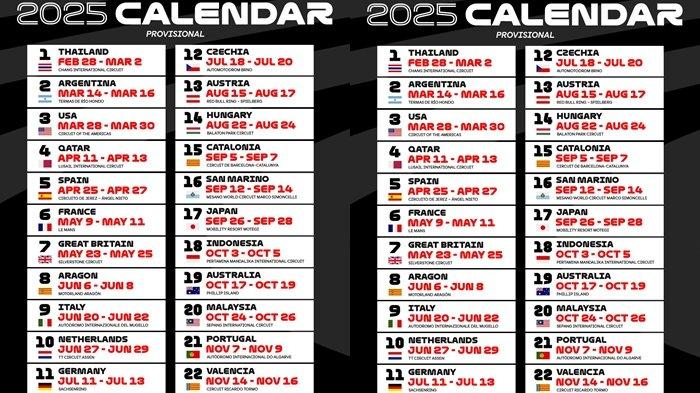Formula 1: Success And Decline After Age 40

Table of Contents
The Physical Demands of Formula 1 and the Aging Process
Formula 1 racing is brutally demanding, pushing drivers to their absolute limits. The intense physical requirements are multifaceted:
- G-forces: Drivers experience extreme G-forces during cornering, requiring exceptional neck strength and cardiovascular fitness to withstand the strain.
- Reaction Time: Split-second decision-making is critical, demanding lightning-fast reflexes and precise hand-eye coordination.
- Stamina: The physical exertion of driving for extended periods, coupled with the mental focus required, places immense demands on a driver's stamina and endurance.
Aging naturally impacts these crucial physical attributes:
- Muscle Loss: As drivers age, they may experience muscle loss and reduced strength, affecting their ability to withstand G-forces and control the car effectively.
- Reduced Reaction Time: Reflexes naturally slow with age, potentially impacting reaction time and increasing the risk of errors during high-speed maneuvers.
- Decreased Stamina: Maintaining peak fitness levels becomes more challenging with age, potentially leading to fatigue and reduced performance during races.
Bullet Points:
- Increased risk of injury with age due to decreased muscle mass and bone density.
- Difficulty maintaining peak fitness levels, requiring more rigorous training regimes.
- The impact of age on reflexes and decision-making under pressure, potentially leading to slower responses and increased error rates.
Mental Fortitude and Experience: A Double-Edged Sword
While physical fitness is crucial, mental fortitude and experience play a significant role in Formula 1 success. Older drivers often possess a wealth of knowledge and skill:
- Racecraft: Years of experience translate into superior racecraft, including strategic thinking, car setup knowledge, and race management skills.
- Track Knowledge: Veteran drivers often possess an intimate understanding of various circuits, giving them a crucial advantage in terms of car setup and racing lines.
- Strategic Thinking: Experience allows for better judgment calls during races, including tire management and overtaking strategies.
However, age can also bring certain limitations:
- Decreased Reflexes: Even with vast experience, age-related decline in reflexes can be a disadvantage in close racing situations.
- Adaptability: Adapting to new car technologies and evolving racing conditions might become more challenging with age.
- Pressure: The pressure to perform at a consistently high level, despite physical limitations, can take a significant toll on mental well-being.
Bullet Points:
- Veteran drivers often possess superior race strategy and car setup knowledge, gleaned from years of experience.
- Increased pressure to perform at a high level despite physical limitations adds a significant mental challenge.
- The mental resilience needed to cope with age-related performance dips is crucial for continued success.
Technological Advancements and Driver Adaptation
Formula 1 technology is constantly evolving, presenting a significant challenge for drivers of all ages. The increasing complexity of car systems requires continuous learning and adaptation:
- Complex Car Systems: Modern F1 cars are incredibly sophisticated, requiring drivers to master complex systems and data analysis.
- Driver Training: Ongoing driver training and simulator sessions are crucial for staying updated on technological advancements and improving driving skills.
- Adaptation Skills: The ability to rapidly adapt to new technologies and driving techniques is a key determinant of success, irrespective of age.
Bullet Points:
- The challenge of mastering increasingly complex car systems, including hybrid power units, advanced aerodynamic packages, and sophisticated electronics.
- The importance of ongoing driver training and simulator sessions to maintain proficiency and adapt to technological changes.
- Examples of drivers who successfully adapted to technological changes later in their careers, such as Alain Prost's mastery of various car generations.
Notable Examples of Success and Decline After 40
Analyzing the careers of veteran drivers provides valuable insight into the impact of age on Formula 1 performance.
Success Stories:
- Alain Prost: Continued to compete at a high level well into his 40s, demonstrating exceptional strategic thinking and car control.
- Nigel Mansell: While known for his aggressive driving style, Mansell also demonstrated tactical awareness and the ability to adapt to changing racing conditions.
Decline Examples:
Several drivers have experienced a decline in performance after 40. This decline is often attributed to a combination of physical limitations, reduced adaptability to new technologies, and a decrease in reaction time. A detailed analysis of individual cases requires considering factors like team support, personal circumstances, and overall motivation.
Bullet Points:
- Comparative analysis of physical and mental performance across different drivers reveals diverse outcomes based on individual factors.
- Discussion of team support and its impact on driver longevity; some teams provide resources for older drivers to mitigate age-related decline.
- The influence of personal circumstances and motivation; a driver's desire to continue competing can significantly impact their performance, even with physical limitations.
Conclusion
Formula 1 racing after 40 presents a unique set of challenges and opportunities. While the physical demands of the sport undeniably impact performance with age, the wealth of experience and strategic acumen developed over a long career can often compensate. Technological adaptation and mental fortitude play a crucial role in determining a driver's continued success. Examining the careers of veteran drivers reveals that longevity in Formula 1 is not solely determined by age, but by a combination of physical fitness, mental resilience, and the ability to adapt to a constantly evolving environment. Understanding the complexities of Formula 1: success and decline after age 40 allows us to appreciate the extraordinary athleticism and dedication required at the highest level of motorsport. Are you interested in learning more about the factors influencing driver performance at different ages in Formula 1? Continue exploring the world of Formula 1 racing and discover more about the remarkable stories of drivers who defied the odds.

Featured Posts
-
 The Lion King And Land Of Sometimes Tim Rices Involvement
May 26, 2025
The Lion King And Land Of Sometimes Tim Rices Involvement
May 26, 2025 -
 Release Gaza Captives Demand From Ex Idf Women
May 26, 2025
Release Gaza Captives Demand From Ex Idf Women
May 26, 2025 -
 The Pilbara Debate Rio Tintos Response To Wasteland Claims
May 26, 2025
The Pilbara Debate Rio Tintos Response To Wasteland Claims
May 26, 2025 -
 Tonton Live Streaming Moto Gp Inggris 2025 Sprint Race Pukul 20 00 Wib Secara Gratis
May 26, 2025
Tonton Live Streaming Moto Gp Inggris 2025 Sprint Race Pukul 20 00 Wib Secara Gratis
May 26, 2025 -
 Jadwal And Link Live Streaming Moto Gp Inggris 2025 Sprint Race Pukul 20 00 Wib
May 26, 2025
Jadwal And Link Live Streaming Moto Gp Inggris 2025 Sprint Race Pukul 20 00 Wib
May 26, 2025
